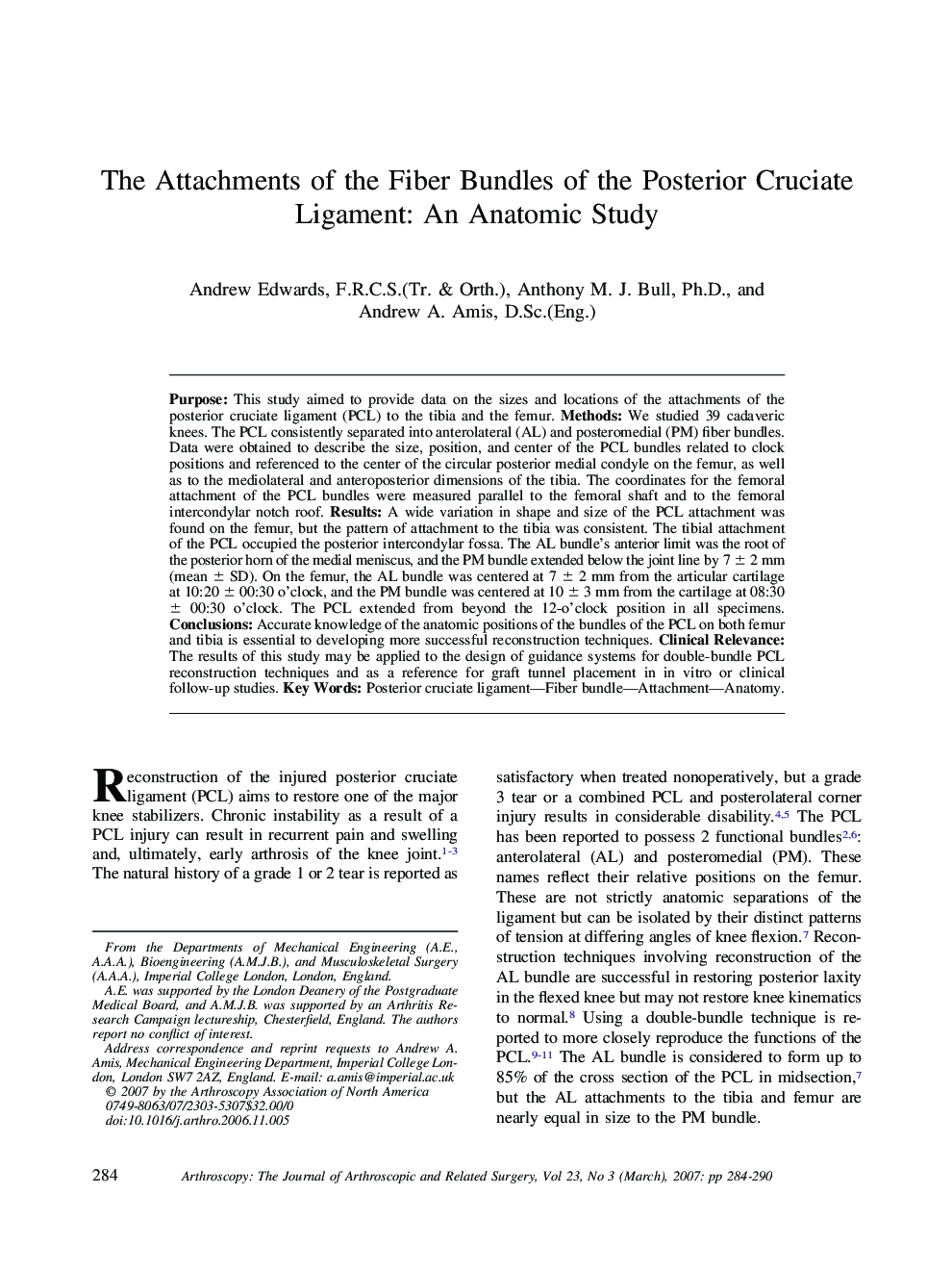| Article ID | Journal | Published Year | Pages | File Type |
|---|---|---|---|---|
| 4047620 | Arthroscopy: The Journal of Arthroscopic & Related Surgery | 2007 | 7 Pages |
Purpose: This study aimed to provide data on the sizes and locations of the attachments of the posterior cruciate ligament (PCL) to the tibia and the femur. Methods: We studied 39 cadaveric knees. The PCL consistently separated into anterolateral (AL) and posteromedial (PM) fiber bundles. Data were obtained to describe the size, position, and center of the PCL bundles related to clock positions and referenced to the center of the circular posterior medial condyle on the femur, as well as to the mediolateral and anteroposterior dimensions of the tibia. The coordinates for the femoral attachment of the PCL bundles were measured parallel to the femoral shaft and to the femoral intercondylar notch roof. Results: A wide variation in shape and size of the PCL attachment was found on the femur, but the pattern of attachment to the tibia was consistent. The tibial attachment of the PCL occupied the posterior intercondylar fossa. The AL bundle’s anterior limit was the root of the posterior horn of the medial meniscus, and the PM bundle extended below the joint line by 7 ± 2 mm (mean ± SD). On the femur, the AL bundle was centered at 7 ± 2 mm from the articular cartilage at 10:20 ± 00:30 o’clock, and the PM bundle was centered at 10 ± 3 mm from the cartilage at 08:30 ± 00:30 o’clock. The PCL extended from beyond the 12-o’clock position in all specimens. Conclusions: Accurate knowledge of the anatomic positions of the bundles of the PCL on both femur and tibia is essential to developing more successful reconstruction techniques. Clinical Relevance: The results of this study may be applied to the design of guidance systems for double-bundle PCL reconstruction techniques and as a reference for graft tunnel placement in in vitro or clinical follow-up studies.
